How To Bind A Quilt

Quilt binding is something that I do for so many of my projects and something that I get asked about a lot. So I thought it was about time that I created a simple tutorial illustrating how I bind my quilty projects with double fold binding that is machine stitched to the front of the quilt and hand stitched on the back.
So you’ve created a quilt top, made a quilt sandwich with batting and then a quilt back, and then quilted or stitched the three layers of the quilt together. Now it’s time to finish the quilt with a durable edging. Binding the quilt is basically sewing a strip of fabric around the outside raw edges of the project to protect those edges from wear and tear over time.

There are a lot of different ways to bind a quilt and there’s no right or wrong way. But I like this method because it gives a very clean and polished finish to all of my projects, from cushions to mini quilts, book covers, bag openings and more.
Single Or Double Fold Binding?
When selecting a quilt binding method, it’s important to consider the size and the needs of the project. Single fold binding (using a single, flat strip of fabric) is terrific for very small projects because there’s only one layer of fabric binding over the raw fabric edge. It reduces bulk and makes it easier to work with small pieces.
However, I tend to always use double fold binding (which is a strip of fabric that has been folded in half) because I find it easier, simpler and I like the idea that the raw edge of the quilt will end up protected with two layers of quilt binding fabric (instead of one).

Straight Edges Or Curves?
If you’re binding the edges of a project with straight sides and square corners, it’s simplest to use fabric binding strips cut from the straight grain across the width of your fabric.
If you’re quilting a project that has curved or scalloped edges, you’ll want your binding fabric to have some give to be able to stretch around those curves. So it’s best to cut your fabric binding strips on the fabric bias (at a 45 degree angle to the straight grain). This means you’ll need a lot of extra fabric and there may be more wastage or leftovers, but the result on those corners and curves will be well worth it!
You could also choose to use pre-made bias tape. The one pictured here has a pretty picot edge to add an extra special detail.
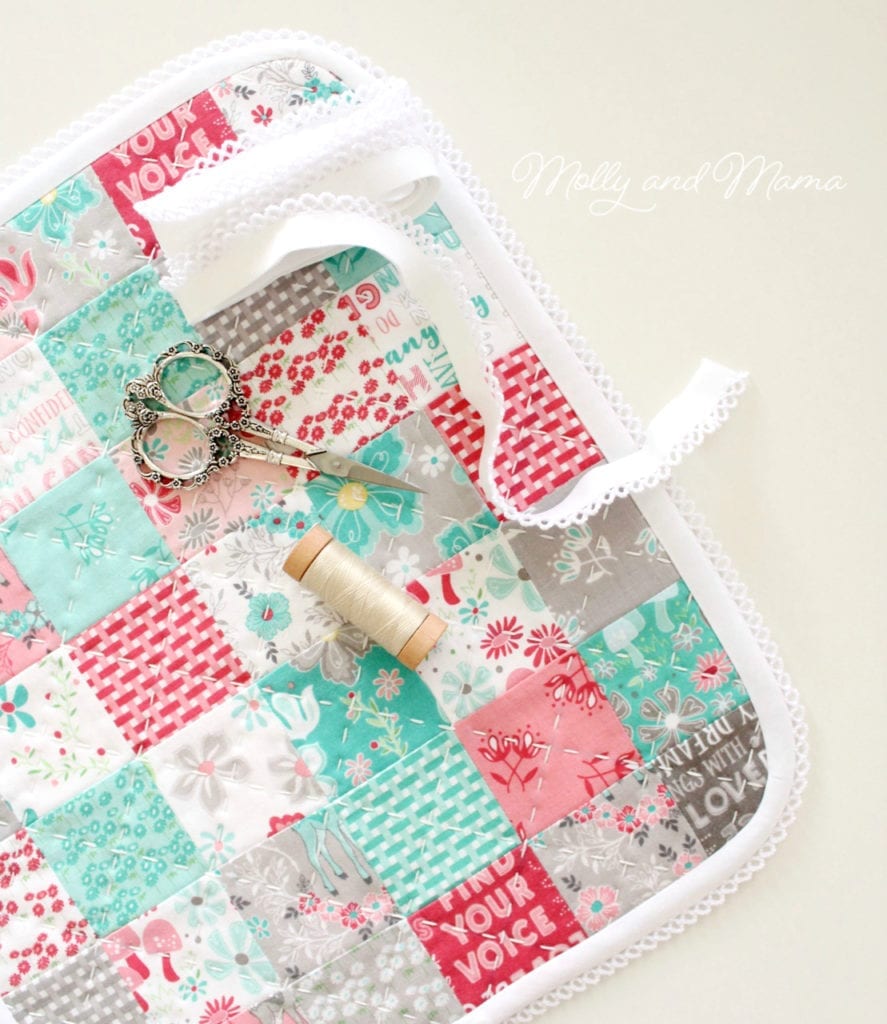
How Much Binding?
You’ll need enough fabric strips so that you can join them to cover the perimeter or outside edge of your quilt plus at least about 10 inches or 25cm extra. Having extra to play with is always helpful too!

Which Fabric Do I Use?
The general consensus is that it’s best to use materials of the same weight and composition as the quilt itself. So a project made with quilting weight cotton would be best bound with quilting weight cotton binding. If you make something out of Liberty lawn fabric (which is finer than quilting cotton), you’ll get a more consistent finish if you use lawn for the binding too. Having said that, it depends on the look you are trying to achieve with the finished item, and the longevity required of it. I often mix and match fabric weights but stick to the same fabric types (so cotton on cotton).
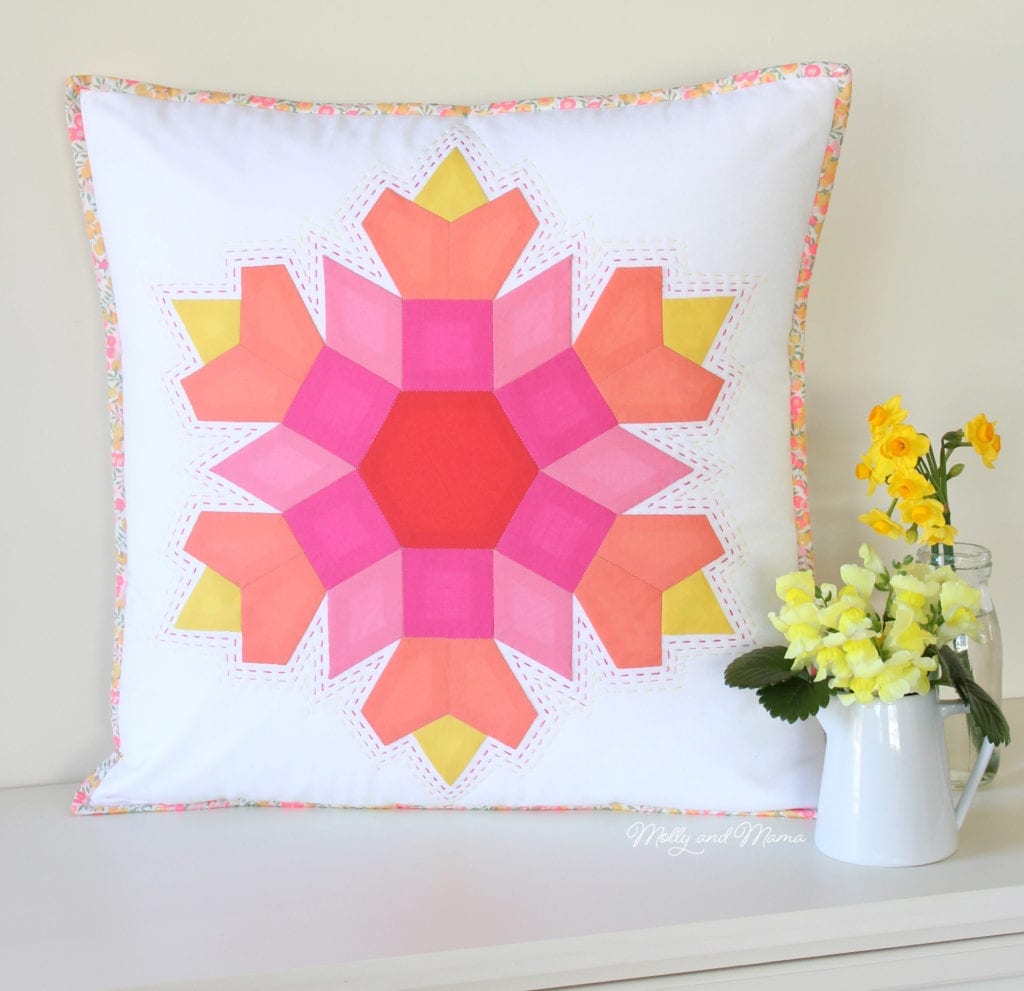
Traditionally, binding is made using the same fabric for the entire length. However, depending on the look you’d like to achieve, you can always create a patchwork of different fabric strips for a more scrappy look.

Or you can even add a single piece of contrasting fabric to add a different detail. Note the contrasting use of the blue Liberty Betsy floral on the Hettie Hexie mini quilt binding top, pictured below.
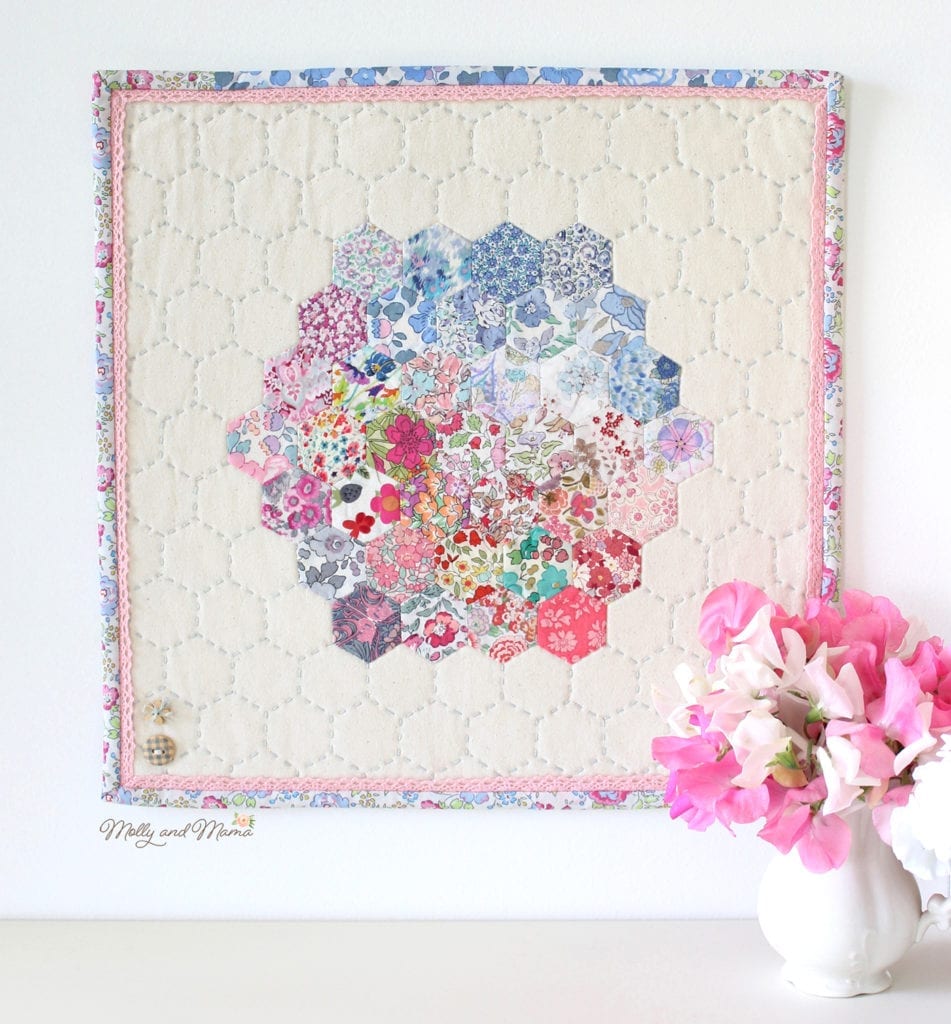
What About Threads?
There’s also a school of thought that the type of thread you use to sew your binding in place should also be the same as the type of fabric (so again, cotton thread for cotton fabric). But some people prefer to use polyester thread because of the way it can appear to melt into the fabric. It becomes barely noticeable. So again, it’s personal preference.
I often use everyday 50 weight sewing thread for quilting and machine stitching. But I like to use a much finer 80 weight cotton thread from Aurifil to sew down the binding, as it gives a more invisible finish. Again, it’s all about preference.
What Else Will You Need?
- quilting cotton for the binding (the amount will vary depending on the type of binding used – see above)
- colour coordinating thread, or a neutral shade like grey, beige or tan to blend with multicolour prints or florals
- needle and thread to hand stitch down the binding
- a rotary cutter, acrylic ruler and self healing cutting mat for accurate fabric cutting
- quilting clips (so handy) or pins

Making Binding
To bind the raw edges of a project, we first need to make enough binding to cover the total length of the outside edges of the project, with a little bit leftover.
Traditionally, single fold binding is usually cut into 1 1/4″ wide strips. Double fold binding requires at least 2″ (5cm) wide strips as the fabric is folded in half. For small projects with no batting in the quilt sandwich (or if thinner materials are used) a 2″ (5cm) wide strip works well. For a quilt, I like to add another 1/4″ (6mm) for a bit of extra leeway – so 2 1/4″ strips.
Using a rotary cutter and acrylic ruler, cut strips of fabric along the width (from selvedge to selvedge) that measure 2 or 2 1/4″ wide (depending on your project and preference).
NOTE: If you are using striped, check or geometric fabric, take note of the lines on the fabric and where you are cutting. If the fabric design isn’t printed correctly on the straight grain of the fabric, you can end up with stripes or checks that look crooked or off centre.
When you have enough length, it’s time to join those strips together. The strips are joined on the diagonal to reduce bulk in the seam when it’s folded over the quilt edge. However, if you are doing a scrappy binding, you might prefer for the join to be straight – it’s your choice.
The following step-by-step images comes from my Milly Mouse Cushion project, which also explains this process in detail.
Trim off the selvedge (the ends of the fabric) and place two strips with right sides together and perpendicular to each other, overlapping the fabric edges a little (so that you can see where the fabric edges are on both pieces of fabric).
TIP: If your fabric print is directional, make sure the prints will both be facing the same direction when they’re stitched together. Likewise, if you’re using a geometric print, like a check, plaid or stripe, try and pattern match the fabric, so that you are joining the same part of the pattern together. This way the seam will be more difficult to spot.
With an erasable marker, draw a diagonal line from the edge of one strip of fabric to the edge of the other strip, opposite the corner. Pin the fabric together and sew along this line.

Trim the corner off the join leaving about a ¼” (5mm) seam allowance.

Open this seam and press it flat.

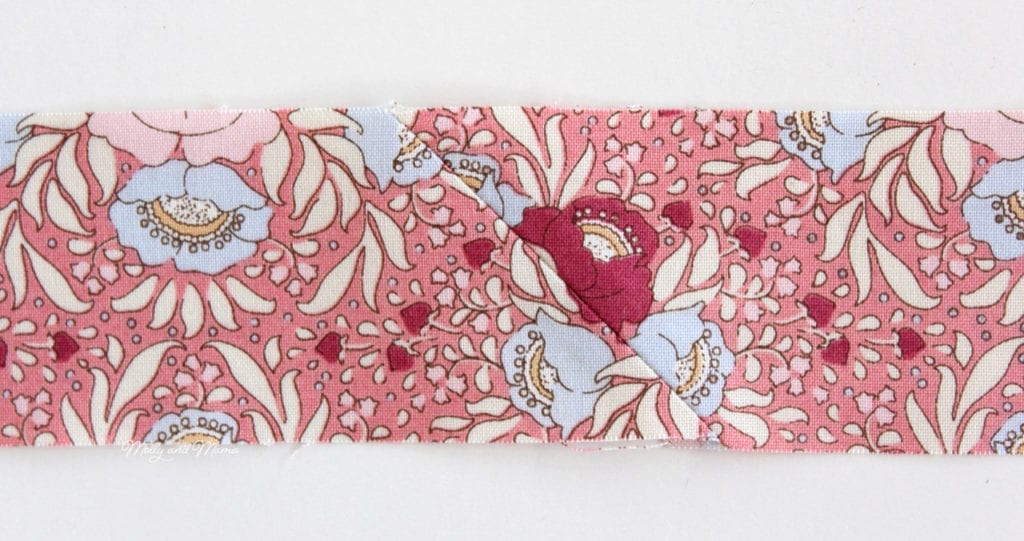
Continue this process until you have the required length of joined fabric strips.
Fold the fabric in half lengthways and press to make binding.

Attaching Binding
Attach the binding to the front of the project using a ¼” (5mm) seam allowance. We’ll start at the centre of the bottom edge of the quilt (or the widest edge of your project that is perhaps away from the front or towards the bottom).
This method gives you a diagonal seam that matches your other strip joining seams, and also reduced bulk. (However, you could also do a straight edge seam, especially if you are using two of more different prints in the binding strip.)
Create a point at one end of the binding. Open the folded binding out and fold the right corner down to meet the left hand edge. Press well. Fold the binding back again and press again. The binding should now have a point on the open edge of the fabric (as shown in the image below).
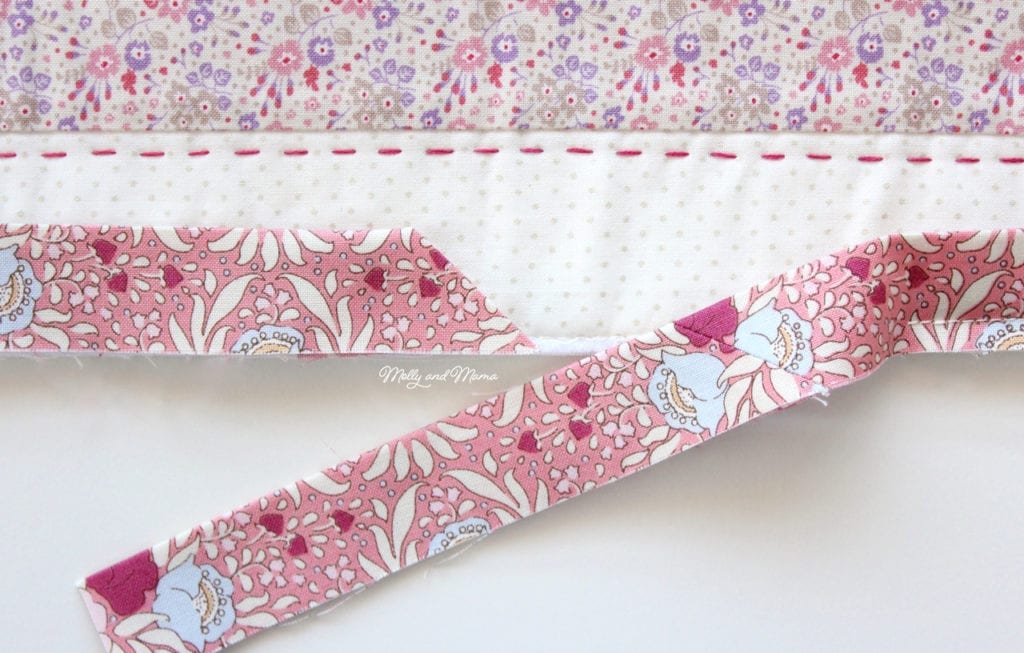
Lay the binding along the bottom edge of the quilt (starting with the folded point end), ensuring the raw edges of the binding and quilt line up. Pin in place. Sew the binding down, starting your stitching about 6” (15cm) from the tip of the binding point.
When you reach the corner, stop sewing at ¼” (5mm) from the fabric edge. (To help with this stage, you may wish you position a needle at the 1/4″ point so you know when to stop). Pivot your needle and sew directly into the corner of the quilt. Trim your threads and remove the quilt from the machine.

Mitre the corner. Fold the binding straight up so that it makes a diagonal fold over the diagonal stitch you placed in the corner. Finger press the fold.
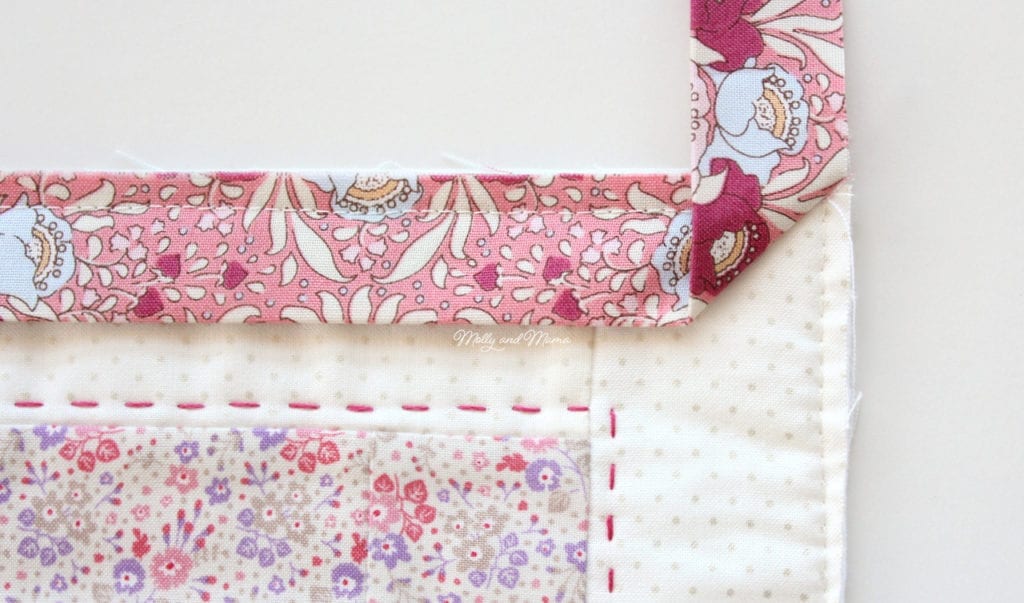
Now fold the binding back down so that the top fold sits flush with the edge of the quilt and the raw edges of the binding are placed ready to start sewing the next side. Finger press the fold. Pin the binding in place down this side of the quilt edge.

Sew the binding down on this side of the quilt, starting at ¼” (5mm) from the top. Repeat the same mitring process at the next corner and continue sewing until you are back to the side where you started binding. Again, stop stitching a few inches before the pointed tip on the opposite end of the binding. The more space you give yourself, the more ‘wriggle room’ you will have.

Fold the pointed end of the beginning of the binding out of the way. Place the remainder of the binding strip along the quilt edge. Overlap the pointed tail back over the top. Place a pin in the binding on the right hand side to mark where the tip of the binding point sits above it.

Open this section of the binding and ensure your pin is still positioned in the same location.
Open the pointed tail and turn it so that its right side is perpendicular to the binding. You may need to fold your project so that the two binding edges can meet.
Line up the top edge, so that the point is positioned exactly where the pin is placed in the binding. Remove that pin and then pin the two strips of fabric together.
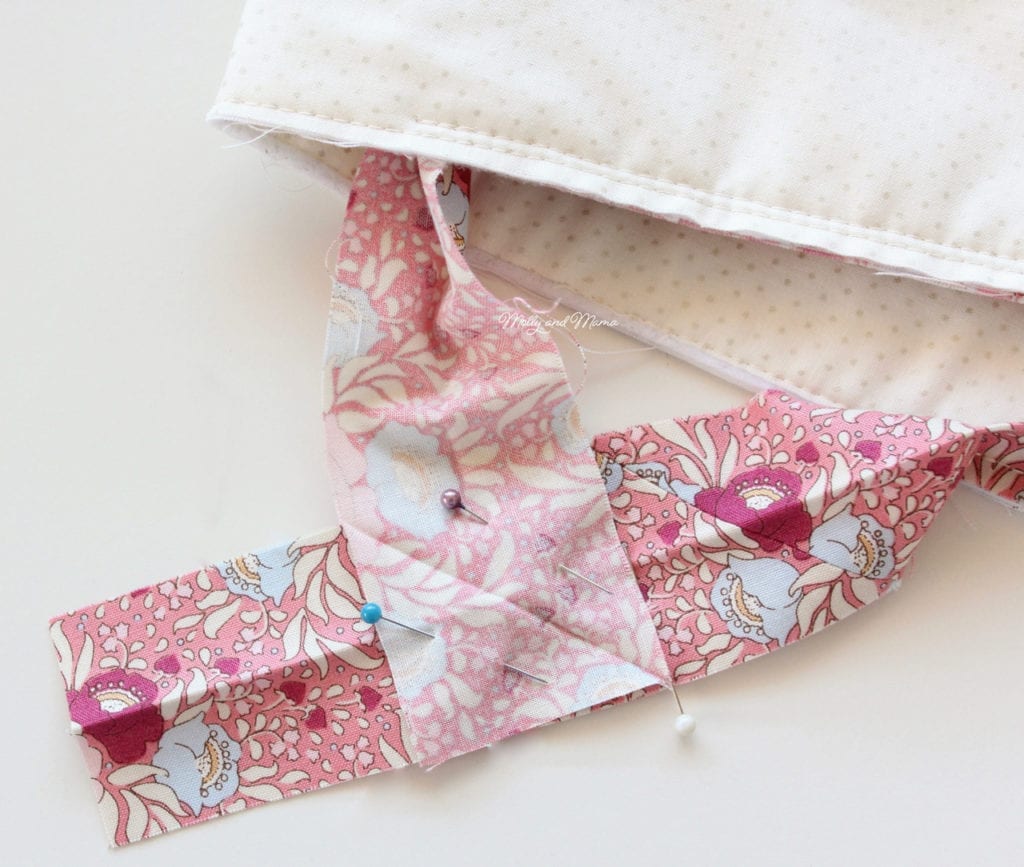
The fold line on the binding (from the point) acts as a seam marker. Sew the fabric along this line (again keeping the project folded if necessary and the binding pulled away from the edge of the quilt). Remove the pins and ensure that the joined binding strip is the correct length and not too loose. (Adjust the seam to make it firmer if necessary now, to avoid having problems later).

Trim off the extra fabric on each side of the seam (leaving a ¼” (5mm) seam allowance).
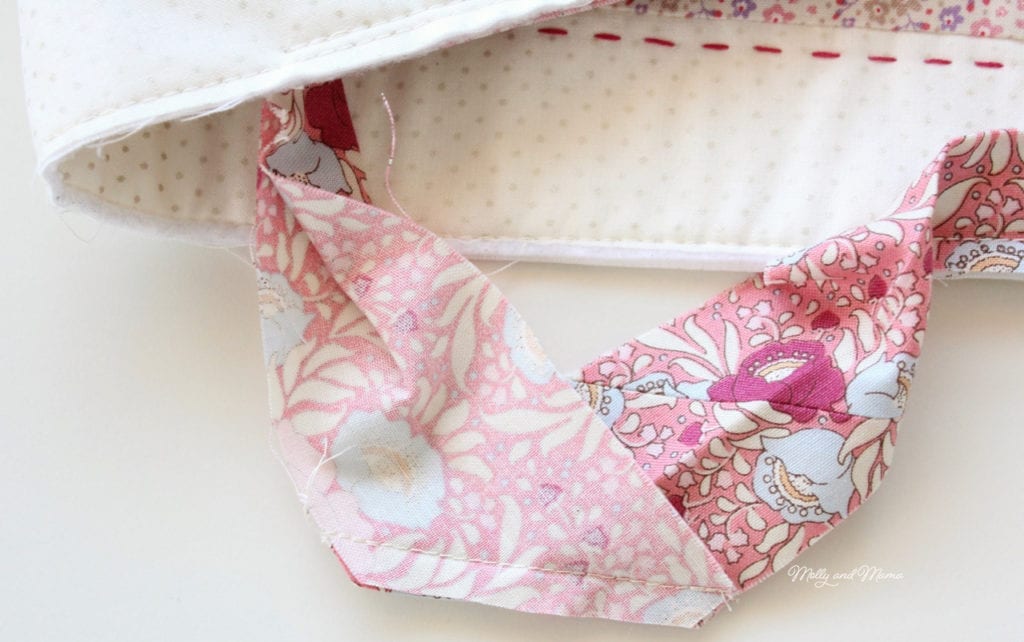
Finger press this seam open. Lay the quilt flat. The binding join will sit neatly down the edge of the quilt. You may also wish to press the binding flat.

Sew the remaining section of binding seam down.
Press and fold the binding over to the back of the quilt and pin or clip in place, carefully folding the mitred corners. Now we’re ready to hand stitch it in place.
Hand Stitching Or Machine Stitching The Binding Down?
Being a bit of a perfectionist, I like hand stitching my binding in place on the back of the quilt. I can be very careful and particular about where the fabric and stitches are positioned, which appeals to me. I also love hand sewing. So sitting down to stitch the binding on a quilt is a lovely, slow and quiet way for me to enjoy the last stages in a quilt’s construction.
You might prefer to complete the quilt binding on the machine. It’s quick and gives instant results!
To hand sew the binding in place, thread a fine but long needle with a 20″ (50cm) single length of thread, knotted at one end. If the thread is any longer, I feel like it’s more prone to knots and tangles. But do what works for you!
I use a blind hem stitch. Hide the knot on the underside of the binding. Bring the thread up through the binding (very close to the binding edge) at point A. Sew a small stitch over the binding edge and insert the needle at point B, coming out again at point C.
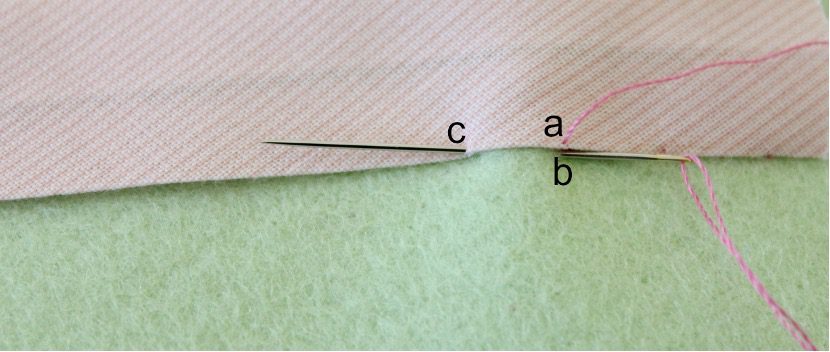
Repeat this series of stitches, ensuring that the thread cannot be seen from the front of the quilt. Keep the stitch length consistent. The smaller the spaces are between the stitches, the stronger the binding attachment will be.

When the entire binding is stitched down, I like to press the back of the quilt. Then it’s all set for use!

I hope that you’ve found this tutorial useful. Keep in mind that there are many techniques and methods for attaching quilt binding, so if this method doesn’t work for you, there’s bound to be another option available online. If you have any suggestions or tips that you feel should be included, please leave a comment and let me know so I can add them here. Sharing our knowledge gives everyone the chance to achieve sewing success, which is my absolute aim here!
Many of my patterns include this technique for binding and some are pictured below. Head to the store to find the Hettie Hexie Mini Quilt, the Stella Cushion, The Summer Rose Pouch The Night Before Christmas Stocking, the Spring Fling Pouch, the Forest Family Quilt, the Simple Sewing Folder, the On Point Pouch and the Milly Mouse Cushion.
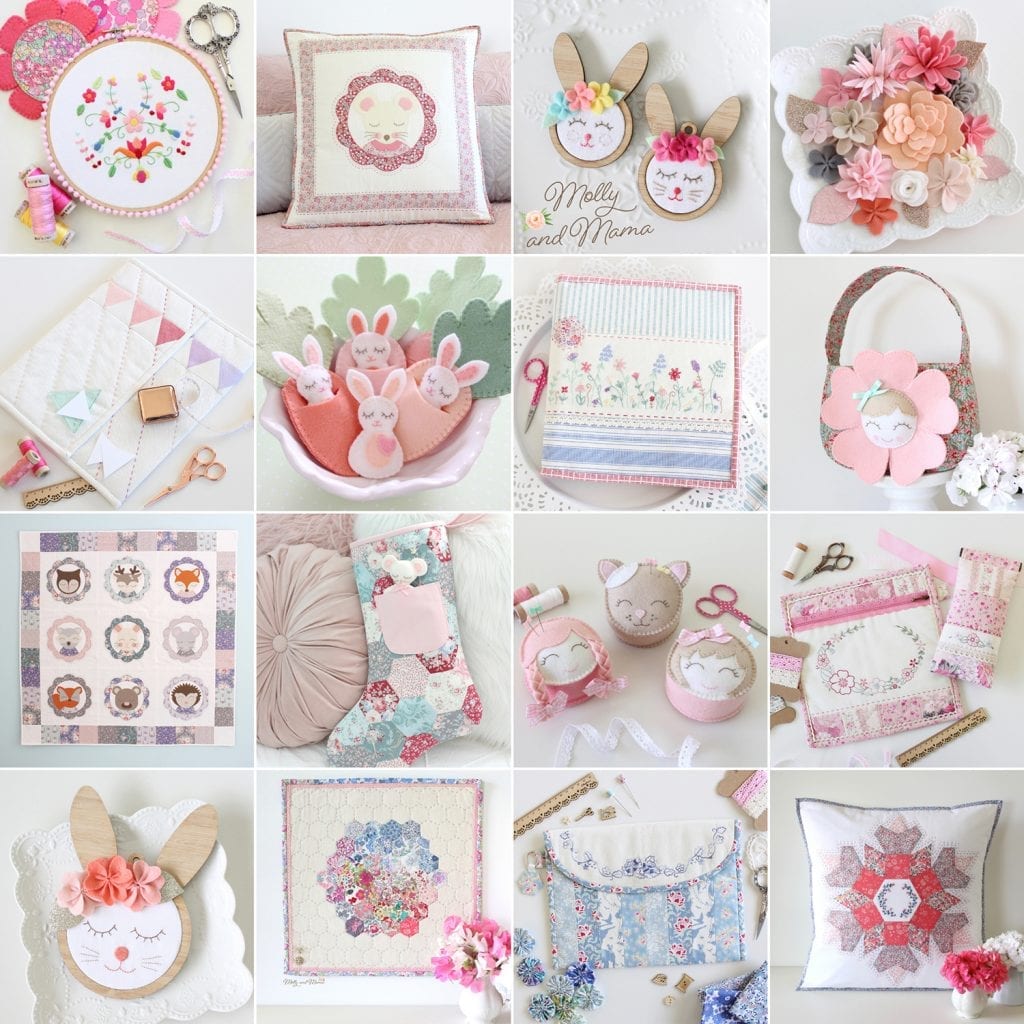
Happy stitching, Lauren x
NOTE: This tutorial is for PERSONAL USE ONLY for sewing at home and/or teaching another person to sew FOR FREE. Reusing or repurposing free Molly and Mama tutorial instructions, templates and images for paid classes, or distributing the materials in classes, to groups, or for commercial purposes, without permission, is strictly prohibited. For clarification, or to seek a commercial arrangement, please contact Molly and Mama.
This post was written by Lauren Wright and appeared first on Molly and Mama https://www.mollyandmama.com.au
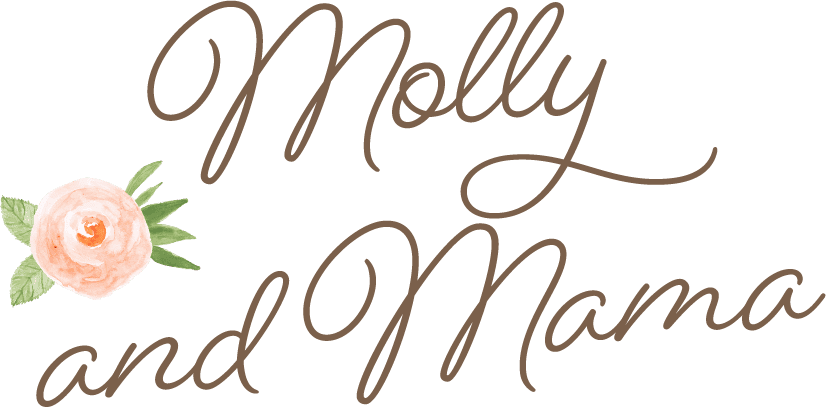

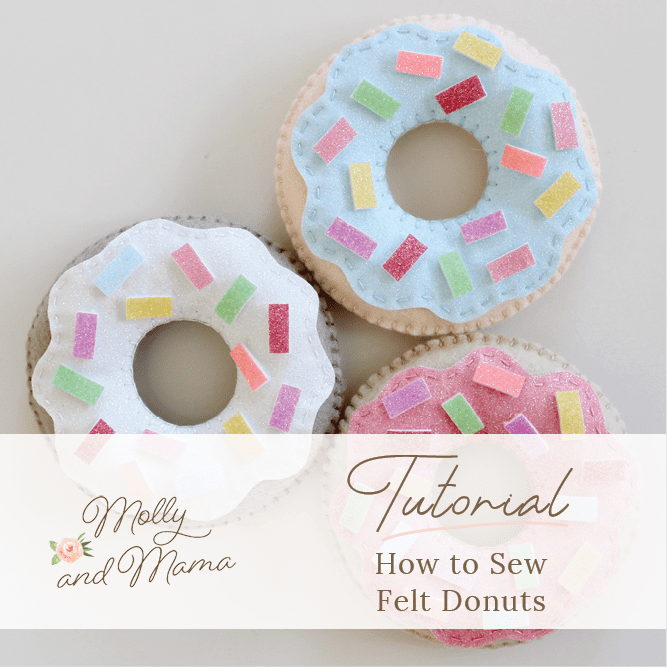


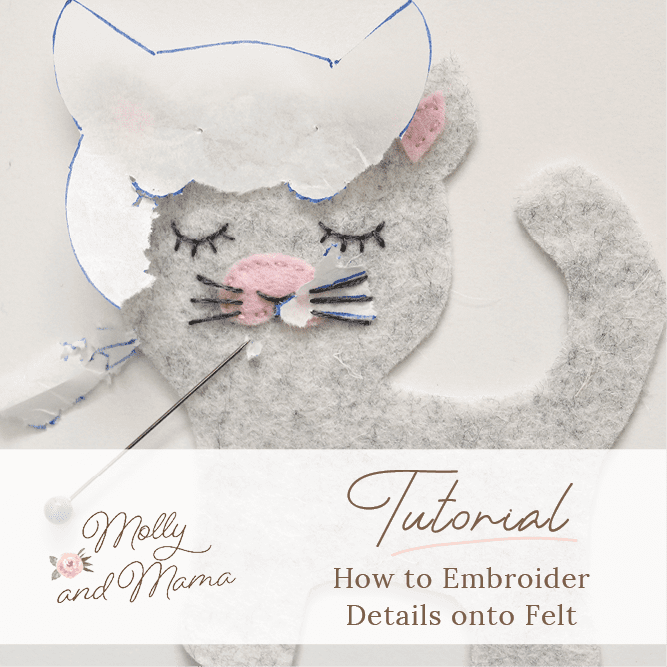
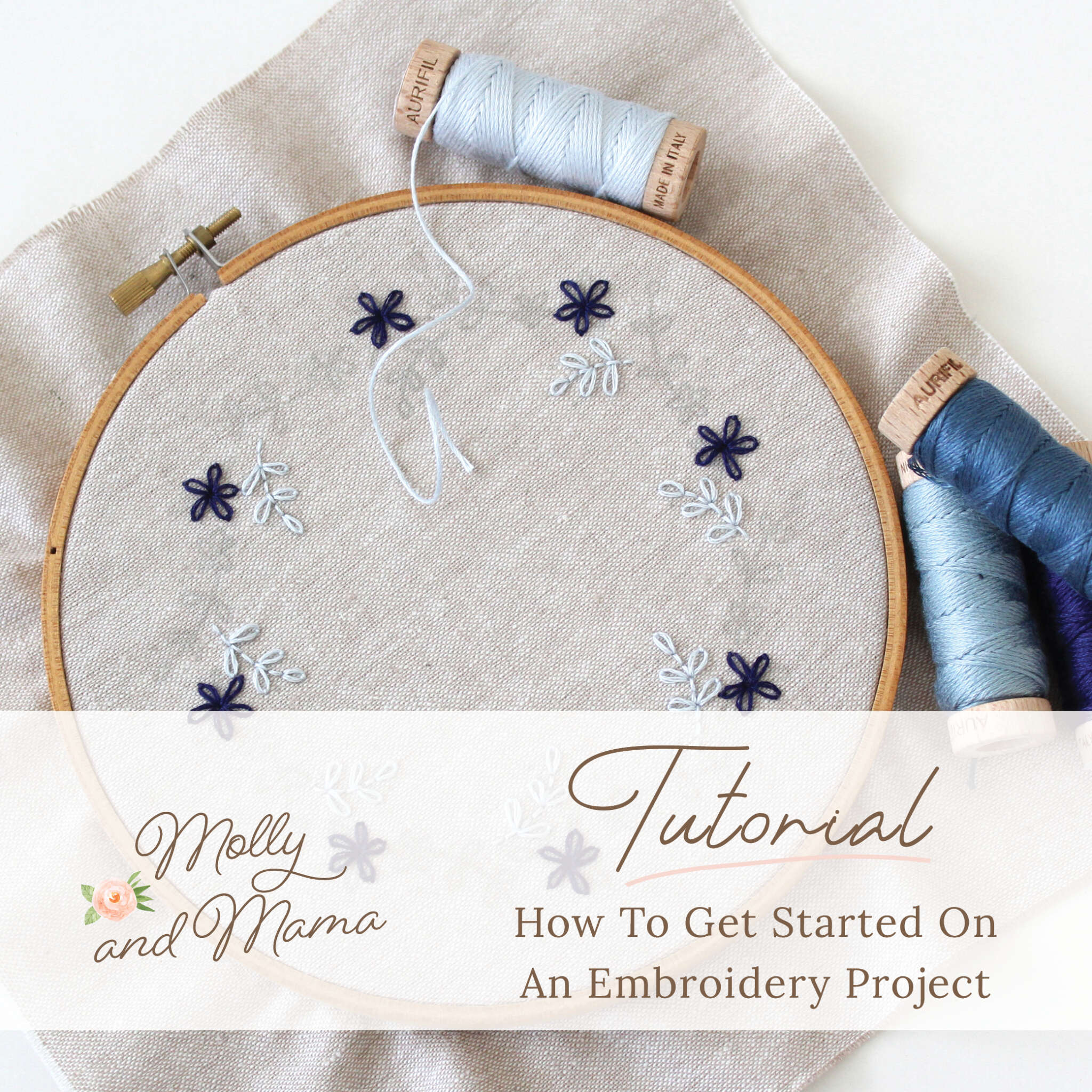
Great information shared! I learn very well.
Thank you for showing us how you finish the ending, this is something I’ve struggled with.
My pleasure. I’m glad you found it useful!
Lauren your information about binding and which to use and how to cut the fabric is very informative.
Can I keep a copy of this information on my computer for future reference?
I would like your permission first before I do it as it is your tutorial
Sure thing Catherine. Permission is granted for personal home use! Thanks for checking, Lauren.
I’ve come back to this tutorial so many times when I’m finishing my quilt. There isn’t a simpler way to join my binding. Thank you so much!!
This is so wonderful to hear Miranda. I’m so pleased it’s been of help to you. Happy quilting! Lauren x